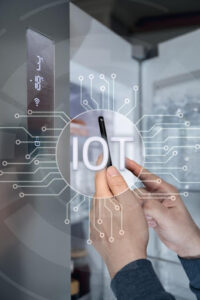
First of all, let’s start by discussing what the Internet of Things (IoT) is, which is the interconnection of physical devices, vehicles, buildings and other elements, equipped with electronics, software, sensors, actuators and network connectivity (also referred to as “connected devices” and “smart devices”) that allow these objects to collect and exchange data.
IoT allows objects to be sensed and/or controlled remotely through existing network infrastructure, creating opportunities for more direct integration of the physical world into computer-based systems and resulting in greater efficiency, accuracy and economic benefit.
The unique combination of hardware, software and services demonstrate the importance of applying best-in-class technology to achieve availability, reliability, performance and cost savings.
IoT solutions in addition to sensing and accumulating real-time data, are also capable of reviewing the situation and taking physical measurements.
Importance
Importantly, the IoT is not just about devices and their connections, it is much more about the data it generates with each connection. Therefore, for IoT to work effectively it must focus on “data” rather than “processes, people or things”. The data retrieved by connected assets provides valuable and actionable information to determine necessary business and operational changes.

Within all things IoT there are 4 points to consider to achieve improvements within your company:
- PRODUCTIVITY: Detect where the customer has areas of opportunity that will help increase profits.
- OPERATION: Improvements in operation that lead companies to save costs, improving their time and customer service.
- SAFETY: Increasing the safety of companies, both personnel and equipment.
- COMPLIANCE: Compliance with regulations or audits applicable to the customer’s business.
IoT applications to different verticals.





